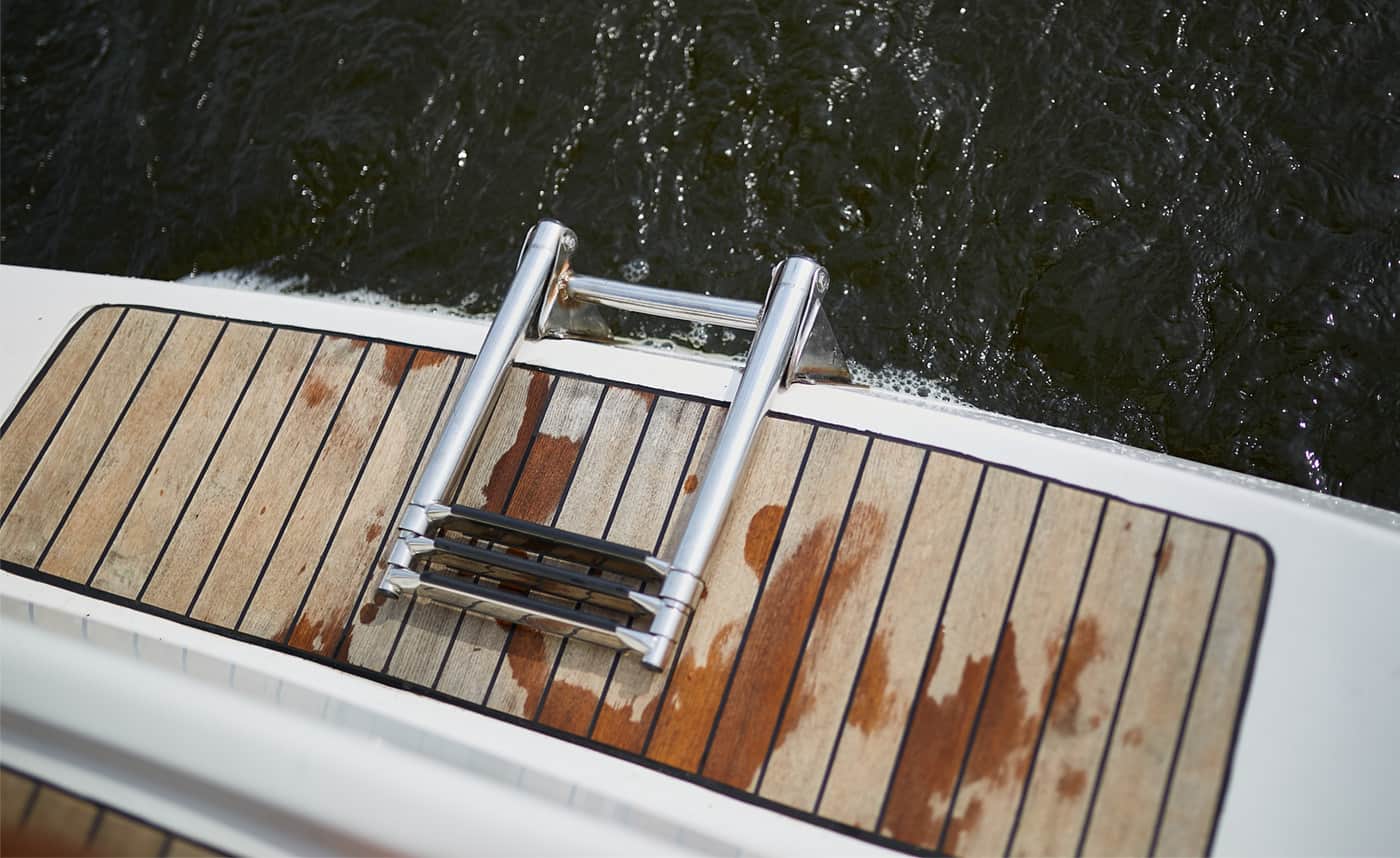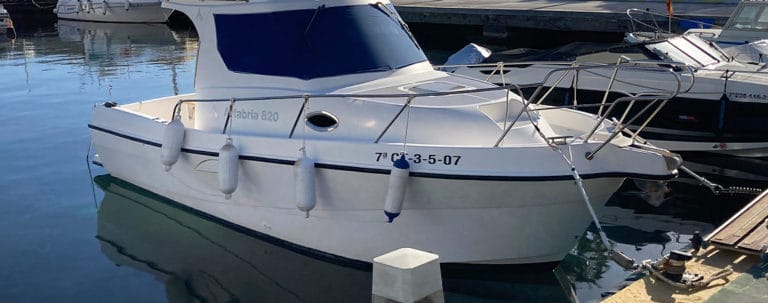The transom on a boat, also known as the back or rear, serves as the vertical area at the boat’s rear end. It typically houses the outboard motor, and in some cases, multiple motors. Modern center console or offshore boats may even have a rear door leading to a swim platform for sea access.
In certain boats, the transom also plays a role in supporting the rudder. The appearance and features of the transom vary based on the boat’s design. Some boats display their name on the transom, along with the sides.
The original purpose of the transom was to reinforce the stern of the boat. It typically features a flat termination resting above the waterline. The term “transom” is derived from the Latin word “transversus,” meaning “set crosswise,” which is fitting considering its shape and structure.
Historically, the term “transom” dates back to the 1300s. Today, the transom remains an integral part of the boat, serving various functions, whether supporting the rudder, housing the outboard motor, or providing a convenient swimming platform or access area.
How do I Know if my Boat Transom is bad?
The best way of telling whether your transom is bad is by looking for physical signs that it has deteriorated.
As it is a piece of hardware that is visible whilst you are on or sound the boat, you can easily see if there are any visible signs of damage by investigating it for cracks.
You can also inspect it for any other damage such as signs of wear, and bumps and scratches, and anything else that looks as though it may be causing an issue.
Typically a transom is made from plywood and features outer layers made from the likes of fiberglass, plastic, and other durable coatings.
However, plywood does not last forever and is not known to be the most sturdy material out there.
As such, it is not uncommon to find that the plywood has weakened, becoming flexible and even rotten over time.
This can then, in turn, affect the outer coatings.
Likewise, the opposite can happen where the sturdy outer layers made from plastic and fiberglass get damaged, thus causing the plywood to wear down quickly.
When this happens it is a sure sign that the transom has gone bad (or is at risk of it) and you should deal with it accordingly.
Can a Boat Transom be Repaired?
You can repair a boat transom, especially if there are just some surface cracks.
Provided the cracks are only on the outside layers and cannot let masses of water into the plywood, then these can be fixed easily by applying a substance that will adequately seal the crack or hole.
The sealant should be durable enough to keep water out of the hole so that it cannot reach the core.
However, if the issue is inside the transom, in the plywood, then this can be far trickier.
The likelihood is that if there is damage that goes through the plywood then the plywood has already been in contact with water and so it may have weakened already.
In this case, it is often best to just replace the transom as it will be easier and may even be cheaper.
How Long Does a Boat Transom Last?
A good quality boat ransom can last around 20 years or so, provided it is looked after properly and checked regularly for cracks.
Any surface cracks that you notice should be dealt with swiftly and properly.
Apply a durable, waterproof sealant to ensure that water cannot seep in and potentially reach the plywood core.
Provided you follow these instructions, you should be able to get 20 years at a maximum from your boat transom.
Of course, if the transom is used often for a swimming board or access route then it may not last this long as it will be in constant use by people.
This may mean that you need to undertake even more upkeep and may mean it needs to be replaced a little quicker.
That being said, you may find that the transom is used only as a place for the outboard motor or rudder.
As such, the transom does not get any human interaction for things such as swimming where it holds weight for some time.
If this is the case then you can expect it to last a little longer, as long as you take care of it.
How do you Stop Transom Rot?
Transom rot is simply wood rot.
The best (and indeed only) way to get rid of wood rot is to take out the rotten pieces of wood and any other pieces that are in contact with it.
Fixing a rotten transom can be a tricky business since the plywood is in the core of the transom rather than an easy-to-reach outer surface.
That being said, it can happen, and so if you do decide to tackle the wood rot head-on by taking it out and replacing it with fresh wood, you should ensure you get every last bit, as well as making sure any cracks are sealed up to prevent it from happening again.
You may feel that it would be easier to just replace the transom completely.




